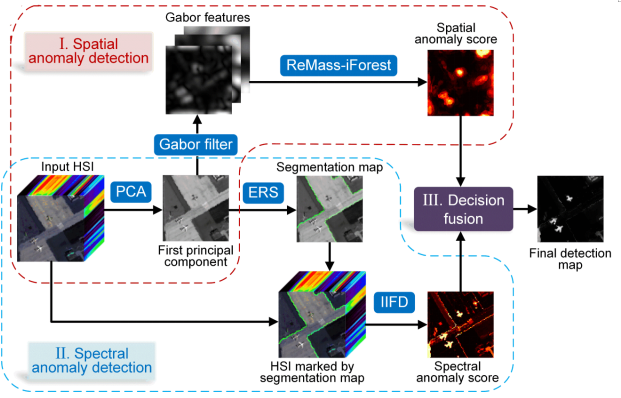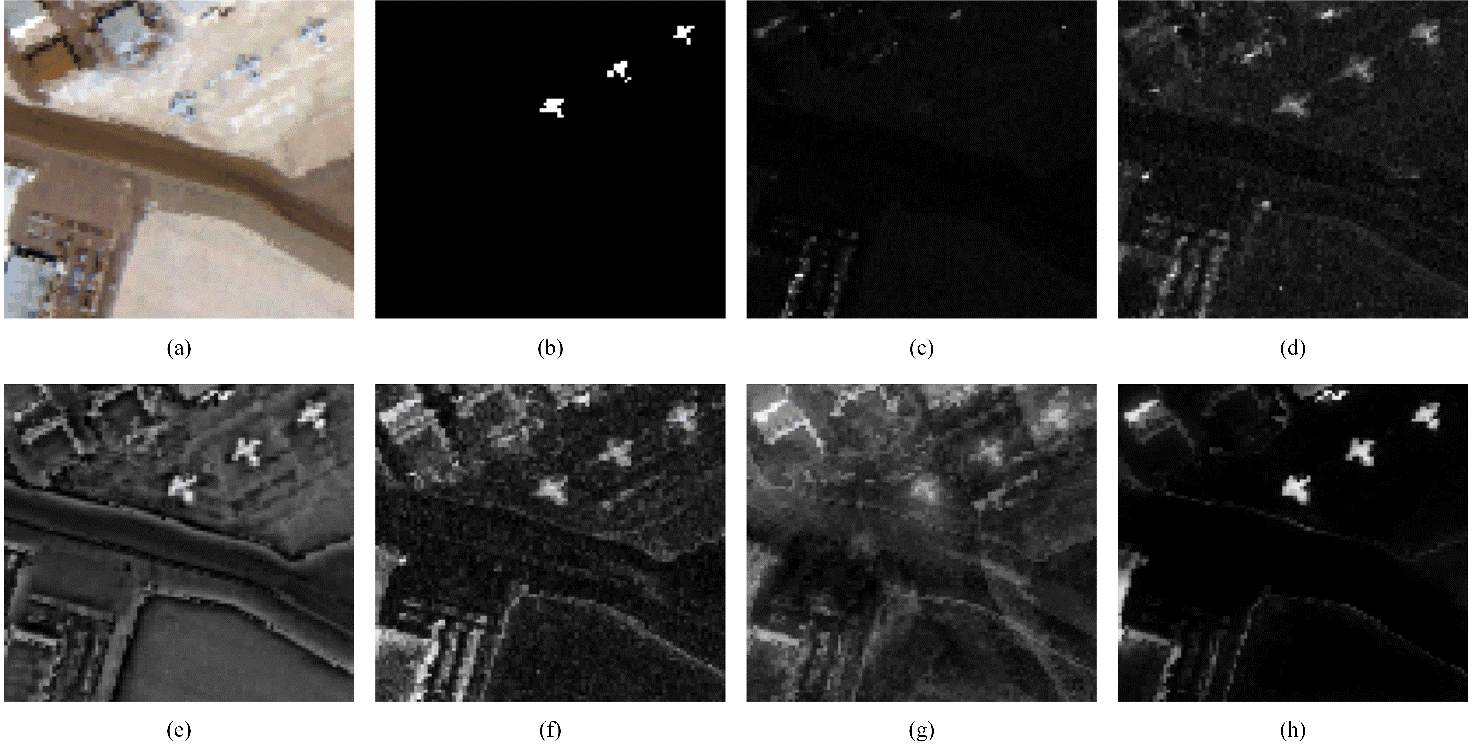Author: |
Editor: SONG Xiangyu | Oct 07, 2021
Recently, a team led by Prof. HE Bin from the Changchun Institute of Optics, Fine Mechanics and Physics (CIOMP) of the Chinese Academy of Sciences (CAS) proposed a new spectral-spatial anomaly detector for hyperspectral images. Their up-to-date result is published on the latest issue of IEEE Transactions on Geoscience and Remote Sensing.
Anomaly detection in hyperspectral images (HSIs) aims to locate and search for targets which are generally unknown but relatively small with low probabilities in an image scene. Because sometimes different objects can have the same spectrum and sometimes have different spectrums, current detection methods have several problems including how to fully utilizes spectral and spatial information in HSIs, how to fully employs global and local information in HSIs,and how to detect anomaly pixels more clearly and accurately at a lower false alarm rate (FAR).
Prof. HE and his team proposed a Spectral-Spatial anomaly Detector based on Improved Isolation Forest (SSIIFD) to address the aforementioned issues in hyperspectral anomaly detection. The characteristic of this detector is that it can detect anomalous targets by using the spatial characteristics of multiple scales in the spatial dimension and the spectral characteristics of multiple dimensions in the spectral dimension.
The proposed SSIIFD evaluates the spatial anomaly score based on the entropy rate superpixel segmentation (ERS) and ReMass-iForest algorithms. This means the SSIIFD is a multi-scale spatial feature extract method. For details, the ERS algorithm favors formation of compact and homogeneous clusters and encourages clusters with similar sizes. As a result, the challenge that size of subregions varies greatly when the background is complex enough can be overcome.
Moreover, the SSIIFD evaluates the spectral anomaly score based on an improved isolation forest (IIF) algorithm, which is proven to have overcome two key weaknesses of isolation forest (iForest) algorithm. The weeknesses are that iForest does not consider how isolated an instance is from its local neighborhood, and that iForest does not consider the selection of more separable bands during the separation.
Besides, most existing anomaly detectors cannot meet the task of full-size pixel and subpixel anomaly detection at the same time, while the SSIIFD has made great process on this issue.
Furthermore, the paper by Prof. He and his team first used 3-D ROC curve and separability range at the same time to evaluate the detection performance quantitatively. Experiments on four real hyperspectral data sets reveal that SSIIFD is stable and superior to other state-of-the-art methods in terms of both objective and subjective evaluations.

Fig. 1. Flowchart of the proposed SSIIFD method. (Image by SONG)

Fig. 2. San Diego-I data set. (a) Pseudocolor image, (b) ground truth map, and detection maps of (c) RXD, (d) CRD, (e) PTA, (f) KIFD, (g) MFIFD, and (h) proposed SSIIFD (Image by SONG).
Contact:
Author: Dr.SONG Xiangyu
Changchun Institute of Optics, Fine Mechanics and Physics, Chinese Academy of Sciences (CIOMP), Changchun 130033, China, and also with the University of Chinese Academy of Sciences, Beijing 100049, China.
E-mail: songxiangyu17@ mails.ucas.edu.cn
Article Links: https://ieeexplore.ieee.org/document/9521674
